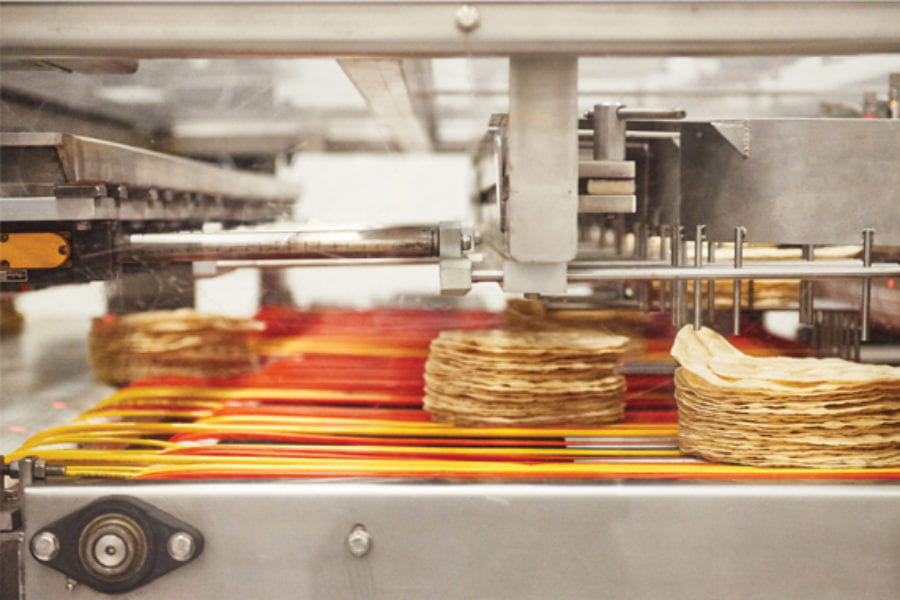To gain a business perspective on migration, we spoke with David Salazar, Vice President of Legal for GRUMA/Mission Foods, on their decision to move to the United States. He discussed the challenges as well as the innovation and knowledge that can be gained through operating a business in diverse regions.
 1. Why did you decide to join the leadership of the Mission-Foods Texas-Mexico Center?
1. Why did you decide to join the leadership of the Mission-Foods Texas-Mexico Center?
It was an honor to be asked to join such a great project, and to share the vision and commitment of Gruma’s CEO and Chairman, Mr. Juan A. Gonzalez Moreno. I’ve lived the Texas-Mexico relation my whole life, not only for being born and raised in Monterrey, a city in northern Mexico with close ties to Texas, but for having roots and family on both sides of the border. I’ve been lucky to work in Gruma/Mission Foods Legal Department for over 15 years in different capacities, where I’ve seen first-hand the marvels of immigration, free trade, and bi-national integration. It just works, and works great for citizens on both sides of the Rio Grande. I am thrilled to support in any way I can the continued improvement of the Texas-Mexico relations through my heritage and business experiences in Mexico and the U.S.
2. Why did GRUMA feel it was important to move into the U.S. market?
Food plays a central role in the complex experience of migration. By the mid 1970’s tortillas, corn derived products and Mexican cuisine were growing in popularity in certain parts of the U.S., for both Hispanic and non-Hispanic population. Gruma made its entry into the U.S. in 1976 with a simple vision to import MASECA corn masa flour made in Mexico and sell it to U.S. tortilla producers. Importing industrialized food ingredients from Mexico into the U.S. was unheard-of back then. Although Gruma had achieved incredible success in Mexico with its MASECA corn masa flour, which greatly simplified and improved the process of making tortillas, U.S. producers were slow to adopt the product, preferring to use the traditional corn masa method.
 As a result, Gruma adjusted its strategy, and decided to produce and market its own tortillas in the United States, mainly to demonstrate U.S. producers that fresh corn tortillas could be sold without refrigeration on mass scale by using MASECA. A year later, in 1977, Gruma opened its first tortilla bakery in Canoga Park, California, with proprietary tortilla industrial production lines. Once again, importing technology and equipment from Mexico into the U.S. for manufacturing was unheard-of.
As a result, Gruma adjusted its strategy, and decided to produce and market its own tortillas in the United States, mainly to demonstrate U.S. producers that fresh corn tortillas could be sold without refrigeration on mass scale by using MASECA. A year later, in 1977, Gruma opened its first tortilla bakery in Canoga Park, California, with proprietary tortilla industrial production lines. Once again, importing technology and equipment from Mexico into the U.S. for manufacturing was unheard-of.
By 1981, MASECA had become widely accepted by producers in the U.S., Gruma had become the largest tortilla manufacturer in the country, and had started to build its first U.S. corn masa mill in the Rio Grande Valley in Edinburgh, Texas. Currently Gruma Corporation operates 20 tortilla plants and 6 corn masa flour mills within the U.S., and has sales of more than $2 billion in the U.S., which account for more than 60% of its sales worldwide.
 Gruma’s accomplishments in the U.S. are the embodiment of a successful cross border integration; from heritage, cuisine, immigration, trade of goods and technology, and binational human capital. Sharing our experiences and making sure people, companies and governments on both sides of the border continue to benefit from the U.S.-Mexico symbiosis is precisely what drove the creation of the Mission Foods Texas-Mexico Center.
Gruma’s accomplishments in the U.S. are the embodiment of a successful cross border integration; from heritage, cuisine, immigration, trade of goods and technology, and binational human capital. Sharing our experiences and making sure people, companies and governments on both sides of the border continue to benefit from the U.S.-Mexico symbiosis is precisely what drove the creation of the Mission Foods Texas-Mexico Center.
3. As someone who has worked on legal matters in both Mexico and the U.S., what is the biggest challenge that you have faced?
Policymakers’ views, objectives and political agendas vary from region to region. Over the last few years there has been an important increase in regulations and compliance requirements on both Mexico and the U.S. on a myriad of legal issues. Navigating through these laws and regulations, which many times vary among the different states, and attempting to incorporate them into a global company like Gruma/Mission Foods, which is required to comply with rules and regulations not only from Mexico and the U.S., but from other jurisdictions like the European Union and the U.K., is the hardest challenge from the legal standpoint for a company with international operations. Gruma/Mission Foods sells its products in over 100 countries. Although we are a corporate citizen of both Mexico and the U.S., we are in fact a global resident.
4. Is there anything you would like to add that may help our audience understand more about what it is like for business owners on both sides of the border?
We had a unique and successful business model in Mexico. When we expanded to the U.S., we learned new ways to produce, package and sell tortillas and took that model back to Mexico, putting that knowledge into practice and expanding our operating facilities to include more than corn-based products. Our U.S. operations quickly rose to become our largest operating division and became the example for all our other divisions, including our first in Mexico.
Gruma likes to integrate as much as possible into the communities where it has its operations. We are grateful to our many employees, some who have been with our company for over 40 years. With over 8,000 employees, Gruma has been a key player in improving equality in both Mexico and the U.S.

0 comments on “Migrating a Business from Mexico to the U.S.: Profile on David Salazar” Add yours →